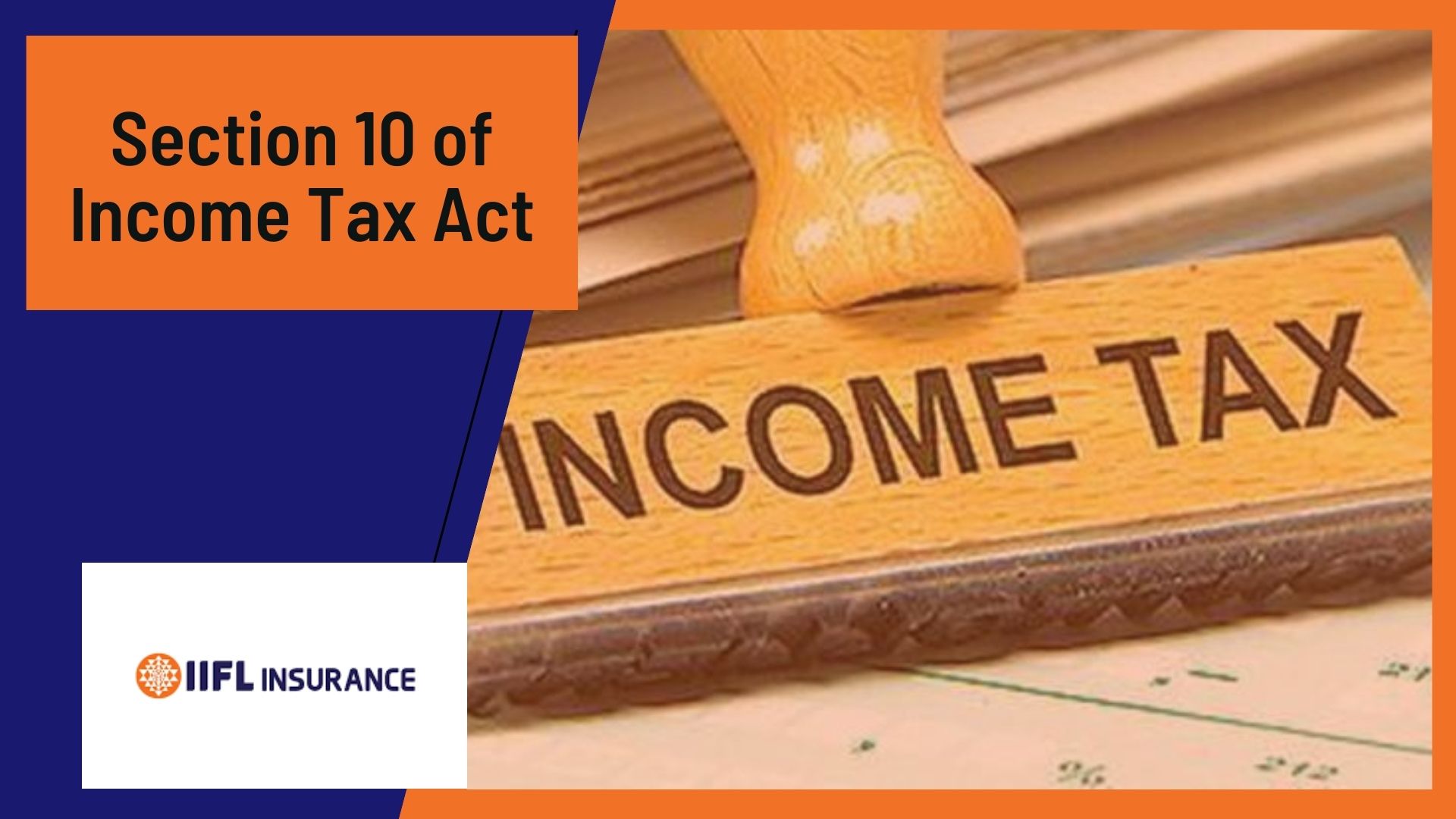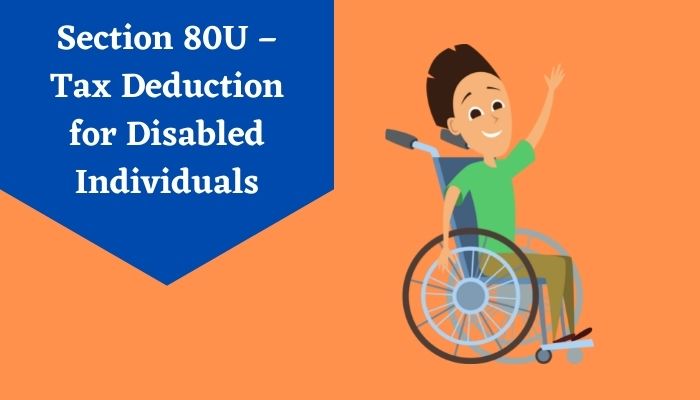Section 10 Of Income Tax Act
There is a general law that states that every citizen who earns, needs to pay a certain amount of tax from his earned income. This is decided by the income tax act. In India, there are new slabs that are announced each financial year in the union budget. This decides the income slabs and the taxes to be paid.
The Income Tax Act helps in the regulation of the tax system in India. The Income Tax Act, 1961 ensures the maintenance of a fair system of tax payment in India. There are about 298 sections mentioned in this act. These sections mention different regulations that are to be maintained while paying taxes.
One of the important sections of the Income-tax Act is section 10 of the Income Tax Act. This section talks about those incomes which can not be counted in total income accumulated to pay tax.
What is Section 10 of the Income Tax Act?
While paying the tax, it is important to look into section 10 of the income tax act as it entails a description of the exemptions one can enjoy on the tax liability. This includes several ways in which one could reduce the tax.
The exemptions of u s 10 in income tax include allowance on children’s education, allowance on rent, allowance on travel, and gratuity.
The taxpayer can enjoy relaxation on the total tax liability and all these are mentioned in Income tax section 10.
Who can claim under Section 10?
Section 10 of income tax can offer an exemption for earning individuals both salaried and non-salaried. Income tax section 10 offers exemptions for:
- Individuals both salaried along with self-employed
- HUFs or Hindu Undivided Families
- Trust and associations
- Foreign and Indian companies
- A body of people, etc.
What are the subsections under Section 10? What types of exemptions are allowed?
Section 10 of Income Tax Act offers exemptions and tax relaxations for earning citizens of India, some of which are:
1. Exemption for agricultural income under Section 10 (1)
If an individual earns any income from agriculture sources, he/she can enjoy exemption on such income. These may include these following income types:
-
- Rent received from agricultural land in India
- Income earned through land used for any agricultural purposes within the geographical boundaries of India
- Income earned through a farmhouse land
- Income earned through seedlings or saplings that are otherwise grown inside a nursery
2. Exemption on income that is received by any coparcener under Section 10 (2) from the HUF:
One can receive the exemption if he/she is a coparcener in any HUF or Hindu Undivided Family. In cases when:
-
- He has a fair share of his income that is to be received by family income
- Income that is received as an inheritance from the family estate
3. Exemption on profit that is received by a partner from a partnership firm under Section 10 (2A)
If an individual is a partner in a limited liability partnership and earns a profit for his partnership with the firm, his profit can be exempted from the computation of tax. The exemption can be enjoyed only if:
-
- The amount is only the profit received
- The amount is not the remuneration on capital
- The amount is not the interest received
4. Exemption received by a non-resident on interest under section 10 (4):
Section 10 (4) is again divided into two subsections, each entailing the description of exemption for non-resident:
-
- Section 10 (4) (i): That includes detail about exemption on wherein interest that can be received by an NRI:
- On any specific securities bonds
- The premium that is earned on bonds redemption
- Section 10 (4) (ii): That includes detail about exemption on wherein interest that can be received by an NRI:
- On the NRE or Non-Resident External Account
- Section 10 (4) (i): That includes detail about exemption on wherein interest that can be received by an NRI:
5. Exemption received by an employee on concession paid and Leave Travel Allowance under Section 10 (5):
An employee is liable to claim a tax exemption on grounds of Leave Travel Concession (LTC) or Leave Travel Allowance (LTA) but there are rules for claiming this exemption and this includes:
-
- When the employee travels within India
- An exemption is not provided on costs of sightseeing and food
- If travel is by air, the exemption is provided only on return airfare of the economy class
- If travel is by other modes, the maximum amount of exemption is of return fare from first-class AC train
- The exemption is allowed only for a total of two travels done during a period of 4 years
6. Exemption on commuted pension under Section 10 (10A):
If any employee is liable to receive a pension fund in his name after his work tenure, he has a right to withdraw some part of the fund in a lump sum, this can be termed as commutation. The rest of the fund is used to pay a pension to the employee. In such cases, the commuted pension can enjoy tax exemption. There are limits for exemption allowed on the commuted part of the pension and this is as follows:
-
- An exemption can be received only on the total commuted value of pension if an individual is an employee of any Government firm or statutory corporations
- In case when an individual is an employee of a non-Government firm and he does not receive gratuity, he can receive half of the pension corpus and that can be commuted as tax-free.
The table given below will help in understanding u s 10 in income tax and its various subsections in a better and clearer way:
| Section and Subsection | Income Category | Exemption |
| Subsection 10(1) | Income of self-employed agricultural | No tax |
| Subsection 10(2) | Income of a member of Hindu undivided Family | No tax |
| Subsection 10(10C) | Voluntary retirement compensation | Exemption up to Rs. 5 lakhs |
| Subsection 10(10D) | Life insurance benefit including bonus | No tax |
| Subsection 10(11)(12) | The amount is withdrawn from the provident fund | No tax |
| Subsection 10(10BC) | Government compensation for damage due to disaster | No tax |
| Subsection 10(15) | Earnings of tax-free securities | No tax |
Conclusion
Income tax section 10 is a standard section of the Income Tax Act, that entails the description of the exemption and relaxation an individual can enjoy on tax liability. It provides information about the total tax one needs to pay on their income excluding the exemptions.
U s 10 in income tax, it is allowed for individuals to reduce the tax liability by enjoying certain allowances. However, as per the recent Union Budget of 2020 – 21, the new tax slab does not allow the taxpayer to enjoy these exemptions mentioned in section 10 but to enjoy these exemptions the taxpayer can continue to pay tax based on the old tax slabs.
It is always beneficial to be aware of the Income tax section 10 so as to enjoy these exemptions before paying tax.





























